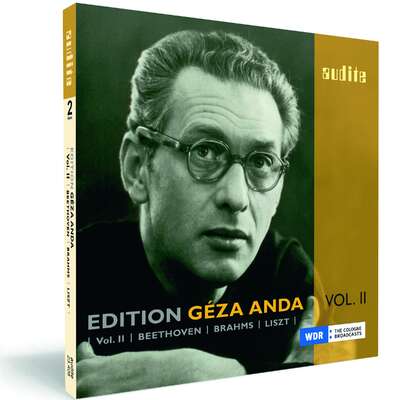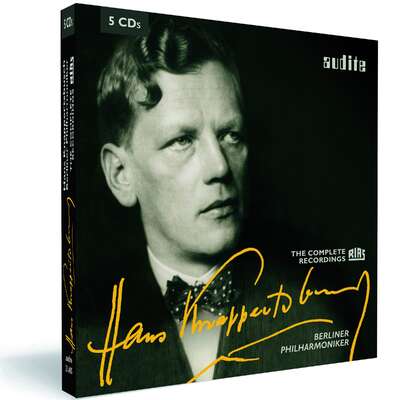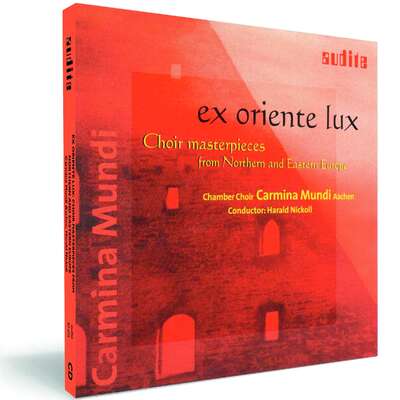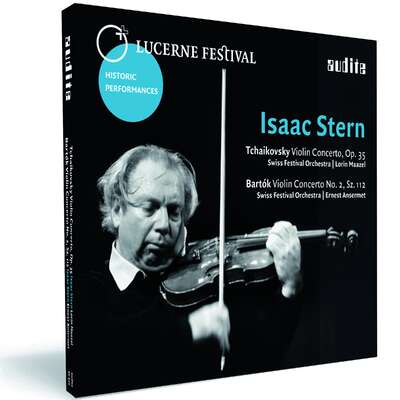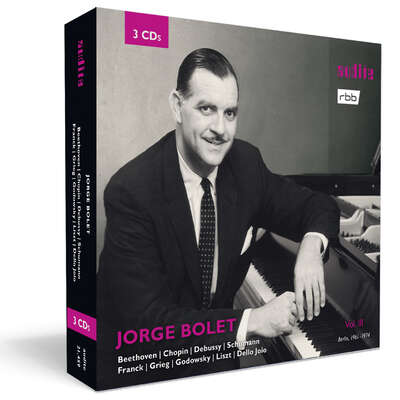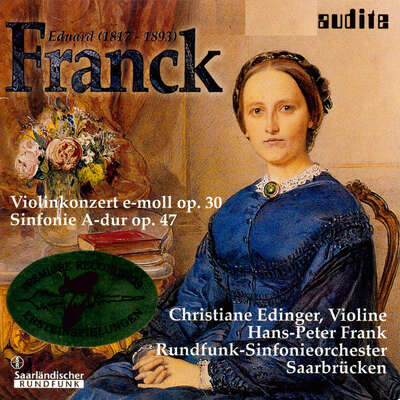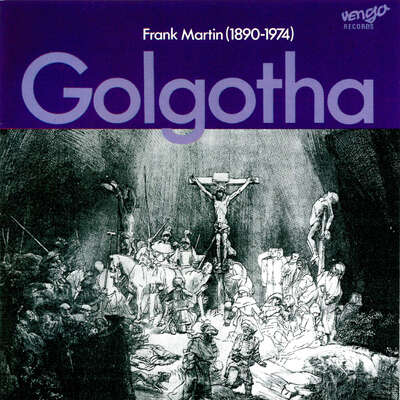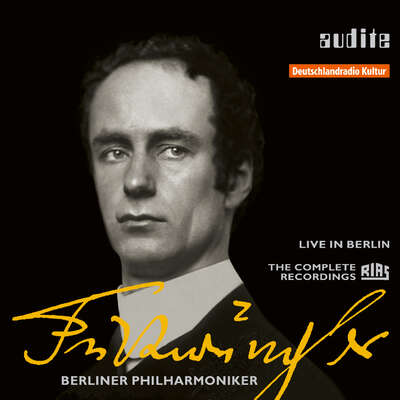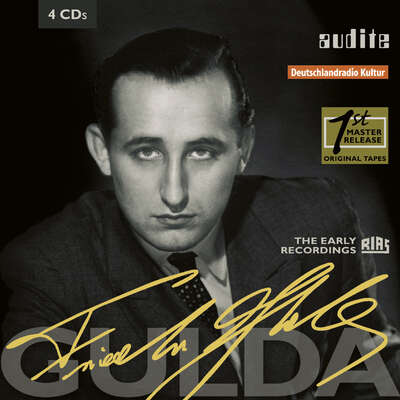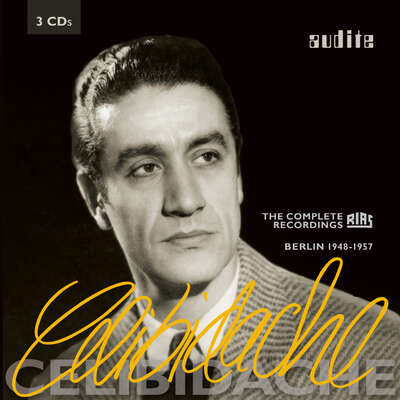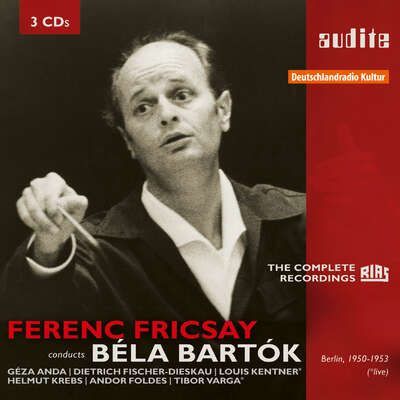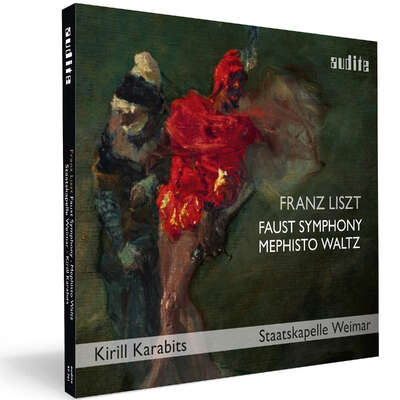
Shura Cherkassky was one of the most unconventional pianists of the 20th century, with an eventful biography and an impressively long career. A Wunderkind from Odessa, he emigrated to the USA together with his parents in 1922 where he achieved his breakthrough shortly after becoming the pupil of...more
"Cherkassky is all lightning fingers, double octaves, brilliant runs, fluttering arpeggios, and grandly punctuated, sweeping melodies." (audaud.com)
Details
| Edition Ferenc Fricsay (IV) – P. I. Tchaikovsky: Piano Concerto No. 2 & F. Liszt: Piano Concerto No. 1 | |
| article number: | 95.499 |
|---|---|
| EAN barcode: | 4022143954992 |
| price group: | BCB |
| release date: | 25. June 2008 |
| total time: | 53 min. |
Bonus Material
Informationen
Shura Cherkassky was one of the most unconventional pianists of the 20th century, with an eventful biography and an impressively long career. A Wunderkind from Odessa, he emigrated to the USA together with his parents in 1922 where he achieved his breakthrough shortly after becoming the pupil of Josef Hofmann. Cherkassky’s concept of playing the piano harks back to the ideals of the 19th century, according to which the personality of the interpreter should always be found within the work. Infamous for his unpredictable modifications of tempi and dynamics when performing together with orchestras and conductors, Cherkassky was able to communicate surprising insights even into seemingly popular programmes by virtue of his technique of changing perspective. It would therefore be wrong to attach to him the cliché of the romantic piano virtuoso; his great interest in contemporary piano music also contradicts this notion.
These recordings of Liszt’s First Piano Concerto and Tchaikovsky’s rarely performed Second Piano Concerto (in the version by Alexander Siloti), conducted by Ferenc Fricsay, convey – thanks to the successful partnership between two great musicians – the sense of noblesse of the “golden age of the piano” whose ideals Cherkassky valued during his entire lifetime.
The historical publications at audite are based, without exception, on the original tapes from broadcasting archives. In general these are the original analogue tapes, which attain an astonishingly high quality, even measured by today‘s standards, with their tape speed of up to 76 cm/sec. The remastering – professionally competent and sensitively applied – also uncovers previously hidden details of the interpretations. Thus, a sound of superior quality results. CD publications based on private recordings from broadcasts cannot be compared with these.
Reviews
Die Tonkunst | Juli 2013 | Tobias Pfleger | July 1, 2013 Edition Ferenc Fricsay – Werke von Haydn, Mozart, Beethoven, Rossini, Bizet, Brahms, Strauß, Verdi, Bartók u. a.
Ferenc Fricsay gehörte zu den bedeutenden Dirigenten des mittleren 20.Mehr lesen
Fanfare | Issue 32:5 (May/June 2009) | Lynn René Bayley | May 1, 2009
Pairing Romantic pianist Cherkassky and post-modern conductor Fricsay doesn’t even seem, on paper, like a good idea, let alone a recipe for success.Mehr lesen
The reason Deutsche Grammophon didn’t release the 1951 recording of the Tchaikovsky appears to be that someone at the label was disappointed by the sound of the orchestra. Although Fricsay was given carte blanche by DG to build his own orchestra, most of the best musicians were already employed by established orchestras of his time. Thus the RIAS forces had tonal weaknesses, though not technical ones, most evident in the harsh, strident, and somewhat thin string and wind tone (though the concertmaster, probably Fritz Görlach, sounds very sweet in an old Viennese way in the second movement), whereas the brass and percussion sections were powerful and superb. But the label had Cherkassky re-record the concerto a few months later with the Berlin Philharmonic under the solid but pedestrian Leopold Ludwig, and this was the version released. Cherkassky’s most famous and widely distributed recording, however, is the 1979 stereo one with Walter Susskind and the Cincinnati Symphony (Vox 7210). I attended one of the actual concerts that Cherkassky gave with Susskind of this concerto, almost unbearably exciting and kinetic, but the studio recording made a week later is a limp dishrag. None of it was played or conducted badly, but it had no coherence or frisson. Yet, despite the stylistic clashes noted above, this previously unreleased performance with Fricsay has everything right.
The Tchaikovsky Second is not as tightly structured as the more famous First Concerto, but more in the form of a rhapsody. Despite a certain amount of thematic development, the score consists of taut dramatic passages for orchestra, or soloist and orchestra, interspersed with a plethora of cadenzas. Fricsay and Cherkassky obviously respected each other well enough to compromise, the pianist reining in his rhythmic impulses in tutti passages and the conductor allowing Cherkassky complete rhythmic and coloristic freedom in the cadenzas. And it works. The only other performance of this somewhat odd concerto I’ve heard that comes close to making as much sense is the almost equally rare recording by Noel Mewton-Wood with Walter Goehr and the “Winterthur” Symphony (actually a pick-up band of Concertgebouw musicians) made a year after this one (Pristine Classical). This performance is even finer, largely because of Fricsay. Though, like most Hungarian conductors, he usually insisted on strict tempos, even stricter and less imbued with rubato than conductors such as Erich Kleiber or Toscanini, Fricsay was nothing if not a passionate musician, thus the majority of his recordings and performances hold more interest than the average (but not the only) recordings of Reiner, Szell, or Solti.
The sound quality of the Tchaikovsky is stunning for its time. Despite the technical limitations of the RIAS orchestra noted above, the performance is so good that I nearly expected to hear an audience erupt in frenzied applause at the end. Like Furtwängler, Toscanini, Munch, and a few others, Fricsay was one of those conductors who could create the excitement of a live performance in the studio. Listen to the climaxes even in the first movement of the Tchaikovsky: the performance fairly jumps out at you with the energy of a tiger.
Both the orchestra and the tempos sound more relaxed and less strident in the Liszt concerto. We have become so used to thinking of Franz Liszt as a keyboard demon that we tend to forget that he himself favored genial, relaxed tempos for much of his music, being one of those Hungarians who was probably more Romantic than Classical in approach. (We should also recall that he promoted the music of Berlioz and Wagner.) I was even more impressed with the sound quality of this live broadcast than with the studio recording that preceded it. Even the triangle in the soft passages is clearly reproduced, and the warmer acoustic of the Titania-Palast, Berlin, does wonders in minimizing the harshness of the RIAS strings and winds. I agree wholeheartedly with engineer Ludger Böckenhoff’s remark in the booklet that “The remastering—professionally competent and sensitively applied—also uncovers previously hidden details of the interpretations.” For aficionados of Fricsay, Cherkassky, and/or these works, then, this new release is very highly recommended.
CD Compact | Marzo 2009 | Emili Blasco | March 1, 2009 Audite Edición Ferenc Fricsay
A cabamos de recibir etos dos compactos de la colección que Audite dedicaMehr lesen
Audiophile Audition | December 2008 | Gary Lemco | December 21, 2008
A truly happy discovery for the connoisseur, these inscriptions, one liveMehr lesen
Fono Forum | 12/2008 | Peter T. Köster | December 1, 2008
Historische Schätze im Sammelpack
Verschiedene CD-Boxen mit wertvollen historischen Orchesteraufnahmen bieten derzeit dem Sammler eine reiche Ausbeute. Aber auch interessante Einzelveröffentlichungen verdienen besondere Beachtung – noch zumal, wenn sie zu vergleichsweise erschwinglichen Preisen erschienen sind
[…] Das "amerikanischste" Orchester im Europa der Nachkriegszeit war ohne Frage das des RIAS (Rundfunk im amerikanischen Sektor) in Berlin, vonMehr lesen
Ebenfalls in der erfreulich schnell wachsenden historischen Serie des Labels Audite ist die älteste erhaltene Konzertaufnahme des Verdi-Requiems unter Herbert von Karajan (Salzburg 1949) erschienen, die zum Vergleich einlädt mit dem fünf Jahre später entstandenen Mitschnitt aus dem Wiener Musikverein, den Orfeo zum Karajan-Jahr beisteuert. Nicht nur die Aufnahmetechnik beim österreichischen Rundfunk Rot-Weiß-Rot hatte sich in diesen Jahren beträchtlich weiterentwickelt, auch Karajans Konzept des Werkes hatte an Differenzierung und Geschlossenheit gewonnen. Beide Aufnahmen vermitteln eine Hochspannung, wie sie Karajans Studioeinspielungen des Werkes nicht erreichen. Während bei der älteren Aufnahme der Bassist Boris Christoff die anderen Solisten überragt, hatte Karajan 1954 mit Antonietta Stella, Oralia Dominguez, Nicolai Gedda und Giuseppe Modesti ein rundum ausgewogenes Sängerquartett zur Verfügung. Das gilt auch für Beethovens Neunte, die im Wiener Live-Mitschnitt von 1955 (mit Lisa della Casa, Hilde Rössel-Majdan, Waldemar Kmentt und Otto Edelmann) noch keineswegs so glatt und stromlinienförmig klingt wie in Karajans späteren Aufführungen.
Böhm und Karajan sind auch in einer dickleibigen Box vertreten, die kommentarlos eine Auswahl wichtiger Dirigenten präsentiert, die um die Mitte des vorigen Jahrhunderts am Pult der Berliner Philharmoniker standen. Freilich sprechen die Aufnahmen für sich: "Klassiker" wie Furtwänglers vierte Schumann, Knappertsbuschs achte Bruckner, Schurichts "Pastorale" oder Celibidaches "Italienische" gehören (obendrein so günstig angeboten) in den Schrank eines jeden Sammlers. Wer sich für zeitgenössische Musik interessiert, sollte sich die letzte Folge der Karel-Ancerl-Edition nicht entgehen lassen, die auf vier sorgfältig kommentierten CDs einen Überblick über das tschechische Musikschaffen zwischen Kriegsende und Prager Frühling gibt und mit einigen kommunistischen "Agitprop"-Werken auch ein Stück Zeitgeschichte dokumentiert. […]
www.musicweb-international.com | November 2008 | Rob Maynard | November 20, 2008
There a few things about this disc that might well strike you as a little strange.<br /> <br /> Firstly, its positioning within this Edition Ferenc FricsayMehr lesen
Firstly, its positioning within this Edition Ferenc Fricsay seems bemusing, to say the least. After all, we’re only at the fourth volume and yet already the conductor who’s the supposed focus is taking not the central role but that of accompanist. Not that there’s anything wrong with that, but you might well have assumed that the Audite marketing team would want to be establishing Fricsay’s musical credentials with core orchestral repertoire in the earliest issues of a continuing series.
Secondly, the sound, though actually extremely clear and bright for its age, may strike some listeners as a little odd in the Tchaikovsky. If you’re old enough to recall the ubiquitous domestic record players of the 1950s or 1960s, usually made by Bush or Fidelity, you’ll remember that they had only two controls over the quality of the sound – a dial marked “bass” and another marked “treble”. In this G major concerto recording the sound is very reminiscent of those old LPs you played with “treble” turned right up and “bass” turned right down, resulting in rather screechy violins. Personally, I quite like it that way – and, after playing this CD a few times, you’ll certainly get used to it – but it will sound decidedly strange at first to anyone who’s only familiar with high quality modern recordings with a wide and realistic tonal range.
The third thing that will seem odd to some listeners is the Tchaikovsky concerto’s overall running time of only just over 35 minutes, compared to the 44 or 45 minutes that we might expect. That’s because nowadays we usually hear the full uncut version of the andante non troppo slow movement that clocks in at about 15 or 16 minutes, while here [and also in his later recording with the Berlin Philharmonic Orchestra under Richard Kraus, now available in Deutsche Grammophon’s The Originals series] Cherkassky opts for the version drastically edited by Tchaikovsky’s pupil Alexander Siloti. Slashing the length of the slow movement by roughly half, Siloti’s cuts create a completely different balance both within the movement itself and in the concerto as a whole.
So, parking those points to one side, what did I make of this CD? Well, especially in the case of the Tchaikovsky, I enjoyed it immensely. Looking at my notes, I see that the words I used most to describe the first movement were propulsive and powerful, with Cherkassky’s very obvious disinclination to linger reflected in the overall timing of 19:53. That’s sprightlier than any other account on my shelves - Gary Graffman (20:50), Emil Gilels (21:03), Igor Zhukov (21:08), Sylvia Kersenbaum (21:34) and Werner Haas (21:48), never mind the plodding “unabridged original version” recorded by Andrej Hoteev that comes in at a staggering 26:40. Even Cherkassky’s own later recording with Kraus, at 20:00, is marginally slower than this one.
This opening movement fully lives up to its allegro brilliante designation. The orchestral sound is very well balanced – both within the RIAS orchestra’s own ranks, as we might expect from well-known orchestra trainer Fricsay, and vis-à-vis the soloist. Moreover, the dialogue between piano and orchestra is very well maintained, with musical phrases and their responses tossed between them most engagingly. Both Cherkassky and Fricsay employ a notably wide dynamic range, but even in the quieter, more reflective passages - where Cherkassky frequently plays with especial delicacy and sensitivity - the strong propulsive thrust is maintained, resulting in a near-ideal combination of ruminative introspection with rhythmic vitality and carefully controlled power.
Clever dynamic control and characteristic touches of rubato are well to the fore in the slow movement and make it clear that Cherkassky has considered the significance of each individual note within a musical phrase with some care. The violin and cello solos (neither player is named) are beautifully played and a real plus, even in Siloti’s truncated version, but are a little more sonically recessed than we are used to in today’s uncut recordings which naturally accord them a higher profile. In yet another instance of his great skill, Fricsay carefully controls the orchestra’s contribution at the movement’s conclusion rather than just rounding things off in a routine way: as a result, you really do listen to it.
The strong propulsive thrust is back with us at the opening of the finale and, while Cherkassky’s delicacy and lightness of touch are still apparent in the piano’s skittering opening phrases, the positivity of the partnership with Fricsay is again evident in some imaginative phrasing in the dialogue between piano and orchestra. By this time, in fact, one has come to appreciate the far stronger than usual contribution that the very skilled RIAS (Rundfunk im Amerikanischen Sektor or Broadcasting in the American Sector) Orchestra and its conductor have made to the overall success of this performance – so perhaps its high-profile placing in the Edition Ferenc Fricsay can be justified after all.
Unfortunately, the Liszt recording - with a live and occasionally chesty audience - did not grip my interest to the same extent. In part, that reflects a concert hall acoustic that is far less sharp and clear. That said, listeners who habitually preferred to turn up the “bass” control on those old Bush record players may enjoy it more than I did. The balance between soloist and orchestra is also less carefully managed than in the Tchaikovsky studio recording. Perfectly acceptable for long stretches, it deteriorates on occasion when Cherkassky at full power can drown out some important orchestral detail.
Cherkassky’s approach to the Liszt concerto is notably less propulsive and even dreamier than in the Tchaikovsky. That is especially apparent at the opening of both the initial allegro maestoso and the succeeding quasi adagio where his finely controlled playing is exceptionally beautiful. There are some moments of genuine excitement where you would expect them - the conclusion of the allegro animato sees soloist and conductor upping both tempo and volume to good effect – but, for me, the overall combination of comparatively dull sound and a not so striking performance relegates this recording to the status of a filler … and, given the CD’s total timing of 53:53, a rather short one at that.
If, however, the Tchaikovsky is your main point of interest – and if you are prepared to accept the Siloti butchery – then I think that, like me, you’ll enjoy this disc a great deal.
Firstly, its positioning within this Edition Ferenc Fricsay
Universitas | September 2008, Nummer 747 | Adelbert Reif | September 4, 2008
Der Dirigent Ferenc Fricsay ist heute eine Legende. Im europäischenMehr lesen
L'éducation musicale | n° 555-556 - septembre/octobre 2008 | September 1, 2008
Dans sa collection « Deutschlandradio Kultur », la firme allemande AuditeMehr lesen
www.classicstodayfrance.com | Juillet 2008 | Christophe Huss | July 15, 2008
Même si la technique date (1951 et 1952) et que le piano n'est pasMehr lesen
Thüringische Landeszeitung | Sonnabend, 12. Juli 2008 | Dr. Wolfgang Hirsch | July 12, 2008
Klang-Welt
Ein eigenwilliger Konzertlöwe
Einen famosen Exzentriker und stupenden Virtuosen des Klavierspiels wieMehr lesen
















